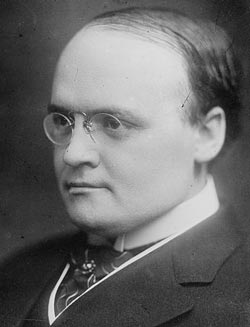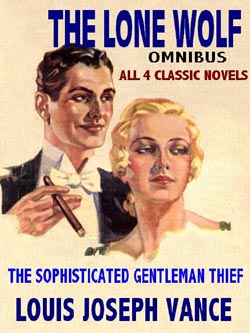Lately, I’ve become acquainted with a number of detectives of yesteryear, not through the fiction written about them, but rather from the filmed adaptations based on that fiction. There’s Hildegarde Withers, for instance, Stuart Palmer’s spinster detective, who worked hand in hand with a gruff police inspector named Oscar Piper. More recently I’ve started tuning in to the cinematic exploits of Dashiell Hammett’s Nick and Nora Charles, who only appeared in one book, but who wound up on the big screen in six movies.

Perhaps the most noteworthy fact about The Lone Wolf, whose given name was Michael Lanyard, is that he was a rather cultivated jewel thief who later turned his attention more in the direction of solving crimes rather than committing them. Which is not such an unusual thing in the annals of crime fiction. There’s a long line of such characters—some just plain thieves and some thief/detectives—stretching as far back as The Saint and E.W. Hornung’s Arthur J. Raffles (and perhaps even further), and winding up in the present day with the likes of Lawrence Block’s Bernie Rhodenbarr and Donald Westlake’s John Dortmunder. It’s a category of crime fiction so enduring, in fact, that it spawned at least one full-length critical work, The Durable Desperadoes, by William Vivian Butler.
Michael Lanyard was born in England, but he grew up in disadvantaged circumstances in Paris. He was taken under the wing of an master Irish thief known as Bourke and thrived at his chosen trade, at least in part due to his urbane and cultured manner. His adventures were first laid out in a work simply titled The Lone Wolf. By the time Vance published The False Faces, the second Lone Wolf book, in 1918, the character was already sufficiently popular to have spawned a 1917 movie—also called The Lone Wolf.

A number of actors played the role of The Lone Wolf more than once. They included Bert Lytell, the first actor to play the role. He appeared in three more silent adventures and the first of the talkies. Near the end of their run Gerald Mohr played the part of Lanyard in three movies.
But it was arguably Warren Williams who was the best Lone Wolf and who was probably most closely associated with the role. He came on board for The Lone Wolf Spy Hunt in 1939 and played the part in eight more films, winding up with Passport to Suez, in 1943. Included in these nine were three of the five films that, for whatever reason, did not feature the words The Lone Wolf in the title.
Any discussion of the Warren Williams installments wouldn’t be complete without making mention of Eric Blore, who came on board with The Lone Wolf Strikes, in 1940. In the role of Jamison, Lanyard’s valet/butler, he brought a considerable amount of comic relief (perhaps too much, at times) to the proceedings. Blore starred in all but two of the Williams installments and then came back in 1947, to play the part with Mohr in The Lone Wolf in Mexico.
But The Lone Wolf was destined to live on even after his days on the big screen came to an end. He actually began appearing on radio the year before the last movie was released, in 1948, with the top role being taken on at various times by Walter Coy and Mohr.
The final incarnation for Lanyard (so far) came in 1954 when The Lone Wolf began appearing on the small screen. The TV series lasted for one season, with 39 episodes produced. Louis Hayward, who had previously played the role of The Saint and had also starred in a 1945 adaptation of Agatha Christie’s And Then There Were None, took on the role. Notable guest stars included Harry Morgan, who would later do another crime TV turn in Dragnet, and Star Trek’s Deforest Kelley, each of whom starred in two episodes.
William I. Lengeman III is a freelance journalist with a fondness for gourmet tea and traditional mysteries. He writes about the former at Tea Guy Speaks and the latter at Traditional Mysteries.
